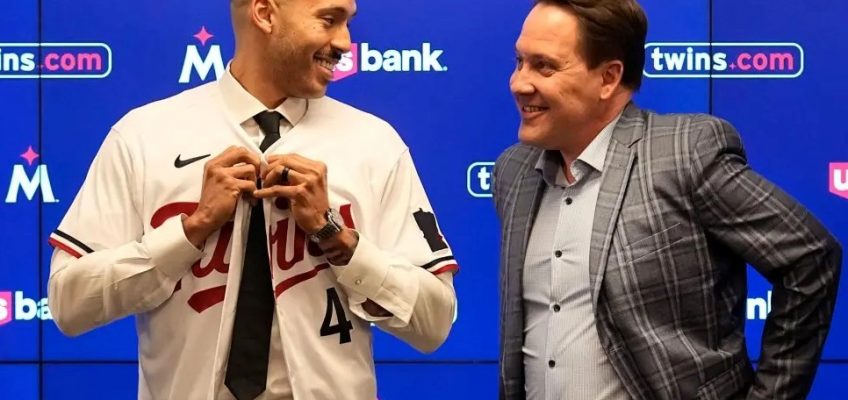The Minnesota Twins will take the field on Friday night in Cleveland with a roster bearing little resemblance to the team it began the week with on Monday in Minneapolis.
The Twins’ roster was ravaged by trades throughout the week — nine total, with seven alone coming on Thursday before Major League Baseball’s trade deadline. The Twins rid themselves of nearly 40% of the active roster, trading 10 of 26 players, and Thursday will likely be remembered as one of the bleakest in the organization’s history.
So, why did they do it? Why did the front office tear apart the roster as thoroughly as it did?
After underperforming for a second consecutive season — the Twins currently sit six games under .500 — the front office decided it was time for a shake-up of the core.
“We had been hovering around or under .500 for a period of time and just couldn’t quite get things going in the right direction, and we’ve got to find a new way to do it,” president of baseball and business operations Derek Falvey said. “Part of that decision was, at this deadline, to reset a few of those spots, to think differently about maybe the way the roster’s constructed some, add some players we think will help us in different ways going forward.”
There’s a lot to dissect as the Twins try to figure out what has gone wrong over the past two seasons. The Twins had playoff odds around 95% last August before an epic collapse left them on the outside of the playoff picture looking in.
The front office did not disrupt the core, entering the 2025 season with nearly the same roster. A slow start this year was offset by a 13-game winning streak that pulled the Twins above .500 for a period of time, but for most of the first four months of this season, the Twins have been an inconsistent, underperforming team.
As the deadline approached, the front office knew it would be trading from the group of players who would be free agents at the season’s end. But it wound up cutting the roster much deeper, trading five players with team control past 2025.
“If we could find ways, with where our roster was, with us not performing at the level we wanted to be at, if we could find ways to get deals we felt brought real, significant talent back into the organization with guys that may have a couple years of control, admittedly, that we could reset or retool a little bit of the roster, we wanted to be open with that,” Falvey said.
Chris Paddack was sent out first, a move on Monday which indicated the team’s intentions to sell. Jhoan Duran went next, a move that suggested this sell-off would be bigger than once expected. And then, over the course of a five-hour period on Thursday, Carlos Correa, Griffin Jax, Willi Castro, Louie Varland, Ty France, Harrison Bader, Brock Stewart and Danny Coulombe were all dealt to contending teams, as well, in a frantic, dizzying array of moves.
Paddack, Castro, Coulombe, Bader and France are set to become free agents following this season, while Duran, Jax, Varland, Stewart and Correa — whose trade was the most stunning of all — were expected to be with the Twins beyond this season. While the Twins thoroughly decimated their bullpen, Falvey noted there was a “deadline premium” that allowed them access to young prospect talent that they did not feel they would be able to acquire otherwise.
“We just got deals we felt we had to say yes to for part of the future,” Falvey said.
As Falvey engineered a sale of much of the roster, the organization itself is navigating through a sale process. The team-owning Pohlad family, which slashed payroll after the 2023 season, announced its intentions to explore a sale in October 2024 after 40 decades of ownership.
There’s no telling how much that impacted the direction that the Twins decided to go in at this deadline but almost certainly, it played some kind of role.
“The sale process continues to be an ongoing reality for our organization and something that we will work through at the right time,” Falvey said. “I work closely with (executive chair) Joe (Pohlad) and the family on any decisions we are making or any plans we’re executing on, and my job is to discuss what those options are, work closely with them and then ultimately come up with a collective plan as to how we navigate forward and that was what was done here.”


Leave a Reply